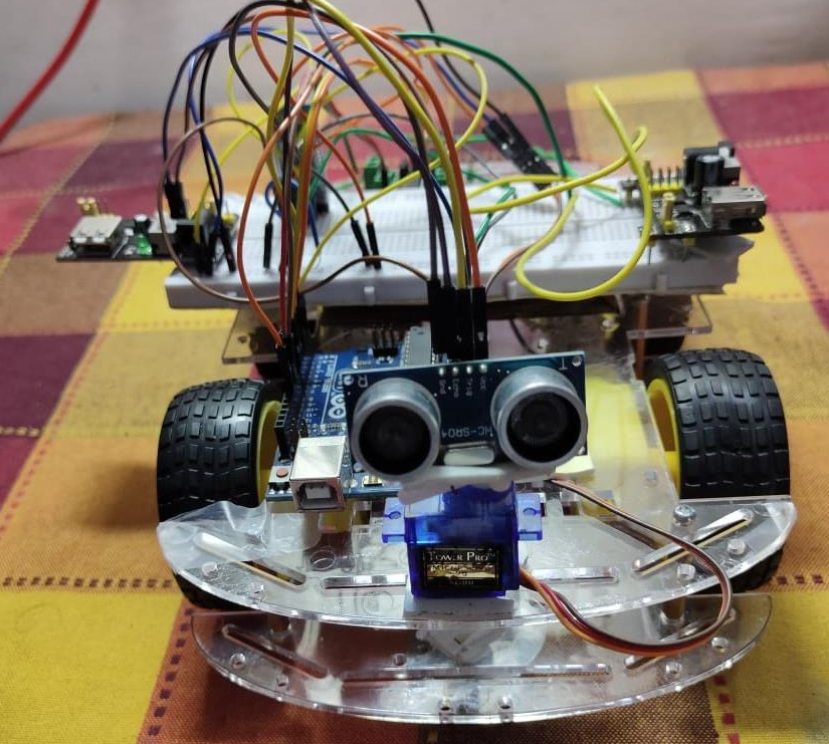Objective:
The Smart Dustbin Project comes under the domain of Environment, Health, and Hygiene. Through this Smart Dustbin project, we aimed to build a working prototype of a dustbin whose lid opens automatically, without any contact when a person comes near it (in the range of 2 – 30 centimeters) to throw the trash. Since the process is contactless it maintains public hygiene and sanitation. Moreover, there are many instances in public places where the dustbins overflow because of irregularity in the waste collection from the dustbin (which is usually done by the municipality sanitation workers).
To overcome this issue, our next target was to provide functionality such that when the dustbin is full, it will not open at all if the person comes near it to throw the trash. Now, a sanitation worker will need to open the bin to empty the contents irrespective of whether it is full. Therefore, to unload the bin in case it is full we provided a switch that when pressed will open the lid in any case. And in this case, the lid will continue to remain open until there is an object (hand) in front of the ultrasonic sensor in the predefined range.
This Smart Dustbin product can be useful in all the places where the dustbin is frequently used and minimal or no contact is expected from the user. For example, doctors can use this in an operation theatre, flight attendants can use it while serving food, it can also be used in public toilets, etc. In countries like India, where waste management is a crucial problem, it is important to work further on such products that provide methods to collect the garbage along with maintaining proper hygiene as well as contributing to the environment.
Outcomes:
Using a microcontroller-based system, we achieved the 3 functionalities at the end of this project that we had aimed for.
1. First, we were able to open the dustbin without any contact using the ultrasonic sensor (the side sensor). It is programmed to detect motion in the range of 2 – 30 centimeters in front of it and this will open the lid.
2. The second functionality is that when the dustbin is full (it reaches a level defined in the code), it will not open even if there is movement in front of the side sensor. This functionality is helpful to resolve the issue of the overloaded dustbins which are often seen in public places all around India. The level of the garbage inside the dustbin is sensed using another ultrasonic sensor (the top sensor).
3. Finally, the last functionality is to be able to unload the dustbin when it is full. This functionality is needed because when the garbage in the dustbin reaches a particular level, after that it can not be opened even with the motion in front of the side sensor (because of the second functionality). Therefore, in this case, to unload the dustbin for reusing we added a pushbutton in our circuit.
Components Used:
- ARDUINO – UNO
- 2 HC-SR04 Ultrasonic Sensors – One on the cylindrical surface (Side Sensor) and the other on the lid (Top Sensor)
- Mini/Micro Servo Motor (9 gms)
- 4-pin push button
- Resistor
- 9-volt power supply
- Jumper wires
- Breadboard code:
Visit Here to Download the Complete Smart Dustbin project code, report, Output Video Link, and any academic project help from the project developer.

